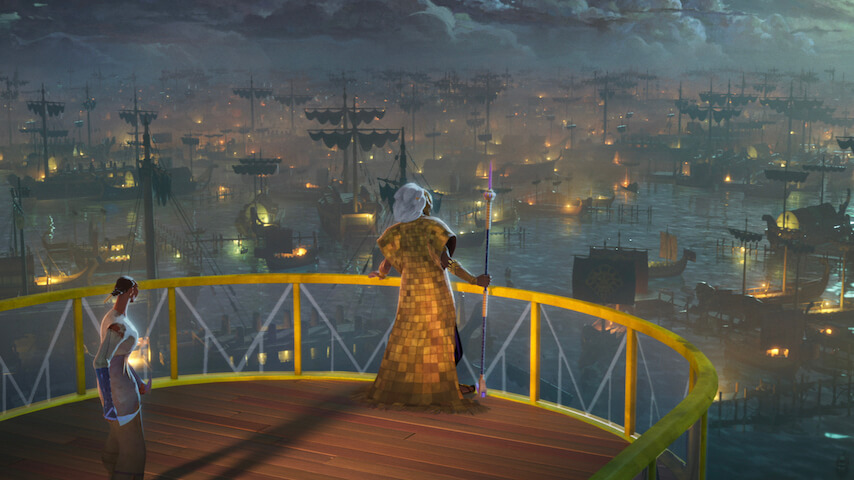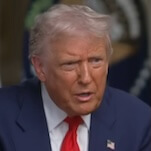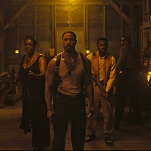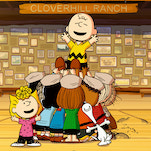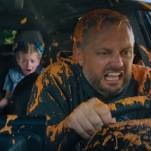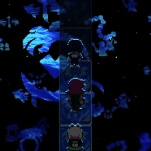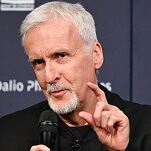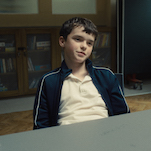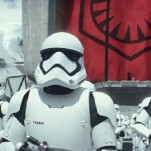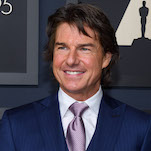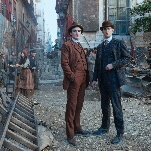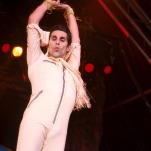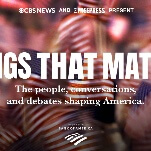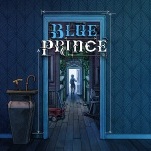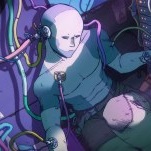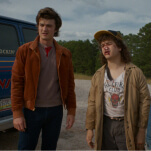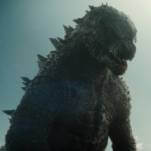With the Marvel movie and TV juggernaut marching on, albeit with a bit less confidence than before, Eyes Of Wakanda represents a unique creative opportunity within a commercial behemoth. With dozens of films and series and decades of Marvel comic continuity to draw from, the limited series is a welcome cul-de-sac off the MCU superhighway—and one that should be traveled more often.
Reaching into the past and possibilities of an established (and under-developed) entity in the African nation of Wakanda allows Marvel, through Eyes Of Wakanda’s stylish animation, to shade in its world even as the MCU proper cruises ahead with more high-profile and impossible to ignore mega-projects. Eyes doesn’t really advance the MCU timeline. In fact, it pauses then reverses it to fill out a small corner of a sprawling universe whose mammoth canvas could use more of this kind of texture.
Startlingly introduced by a chyron placing the series in 13th-century Greece, the show’s four installments each take place in a different time period spanning some 600 years. Interconnected mainly by the theme of Wakanda’s zealous hoarding of vibranium and the missions of various agents of Wakandan dark-ops bureau the Hatut Zeraze (or War Dogs) to reclaim the essential space mineral in the vast and ignorant world outside of the nation, the series succeeds in making the Black Panther’s domain more satisfyingly complex.
Issues concerning the self-isolated techno-utopia’s position as a camouflaged seat of unthinkable Black power smack in the midst of centuries of Western predation are touched on, if obliquely. Seeing an Indiana Jones-esque Wakandan agent zip unnoticed through the skies of 15th-century China in what’s essentially a vibranium jet fighter necessarily colors the War Dogs’ missions through a lens of both wonder and skepticism as to the nation’s all-consuming isolationism within the bloody and exploitative sweep of world history.
Ultimately, the lures of that fractious and warlike wider world are part of the show’s quest to examine Wakanda’s cultural choices. The premiere shows how the temptation to extend vibranium-fueled influence outside that country’s borders means being inevitably tainted, as a loyal female agent battles a legendary former War Dog turned pirate king and slaver. The Hatut Zeraze enforce Wakanda’s unbreakable code of isolation because, in the advanced and judgmental Wakandans’ eyes, people (meaning everyone not Wakandan) are too irresponsible, violent, and untrustworthy to handle such power as they possess. That high-minded paternalism tugs at every thread of the show’s brief runtime, with Eyes Of Wakanda leaving one of Marvel’s most fascinatingly under-explored locations a fair degree richer.
This exercise in retroactive world-building could indeed be leading up to a more nuanced and complex series of Wakandan stories, of course, even if there are at present no plans for a continuation. Eyes Of Wakanda is, in itself, an exercise in retroactive character complexity—the character in this case being the national one of Wakanda and its place in this superhero-packed world.
In Ryan Coogler and showrunner Todd Harris’ choice to spin out the story of the Wakanda the former helped establish in two major MCU blockbusters, this relatively humble (a reported $20 million in Marvel money) project stubbornly resists obvious expansion or commercial exploitation. There’s an almost noble lack of renown and remuneration promised by this sort of project. Lovingly crafted but lacking go-to playset potential in its thoughtful depiction of the past and its conflicted heroes, there’s something smacking of—dare it be suggested—art above commerce going on here.
Coogler’s MCU success, both commercial and critical, allowed him that freedom. But if earning Marvel/Disney a few billion dollars represents the bar, it’s a shame. Letting creative types who are fans of a particular niche of the sprawling Marvel universe have a go at elaborating on underdeveloped elements of the Marvel movie brand would go a long way toward undoing some of that superhero malaise we’ve been hearing about.
As more and more heroes, villains, nations, and even entire worlds are ground up in the MCU content shredder, there’s plenty of opportunity for creators to sift through the rubble. Sadly, editorial has likely rendered some elements irrecoverable—there are no doubt fans disappointed to see a C-list character they’ve always been drawn toward reduced to a one-dimensional nemesis or sidekick. Just take a look at Mantis: While James Gunn and Pom Klementieff’s empathic naif and amusingly blank comic foil is an endearing minor Guardian of the Galaxy, those familiar with the comic character’s richly overstuffed backstory as martial arts master turned Celestial Madonna no doubt lament the simplification.
But Marvel fairly bristles with unspoken stories around the fringes of each successive (and fairly supervillainous-sounding) phase of its world-conquering entertainment onslaught. And while it’s unlikely we ever would have seen a full Mantis movie, an MCU where superpowers burst out of every radioactive canister, spider bite, or random mutation (here come those mutants!) leaves plenty of C- and D-listers to build a minor-key character piece around.
Promisingly, Phase Six’s upcoming Wonder Man TV series looks to be nodding in that direction. Simon Williams (embodied in the show by Yahya Abdul-Mateen II) is decidedly B-list at most, an ion-powered bruiser with action-hero aspirations and a ridiculously convoluted backstory (that’s streamlined for the series). With its mix of showbiz satire and superhero action, this Wonder Man is no doubt prepping for his turn in the Avengers spotlight. But in the meantime, he is the sort of offbeat, under-the-radar character the MCU could use more of. (That government cleanup crew Damage Control somehow plays into Wonder Man’s adventures is promising as well. A world economy needing to factor in routine January 6-level supervillain catastrophes would make for an intriguing watch, right?)
Sadly, the relatively disappointing box office for Thunderbolts* will likely teach the Marvel higher-ups the wrong lessons. A bracingly contemplative smash-em-up, the film was all C-list, as MCU cast-offs, also-rans, and fallen would-be icons banded together to overcome their own imposter syndrome insecurities and Julia Louis-Dreyfus’ deliciously scheming Valentina Allegra de Fontaine to inevitably save the world. Thunderbolts* ends with a media montage of worldwide skepticism about this scruffy group’s ability to fill the vacant Avengers’ boots, and the collective meagerness of its superpowers lends an air of unaccustomed risk and narrative possibilities to the ongoing mission. It’s the MCU under the guardianship of far more vulnerable and complicatedly human antiheroes, a tingly narrative offramp undermined by a post-credits scene suggesting that their time at the top will be quickly toppled.
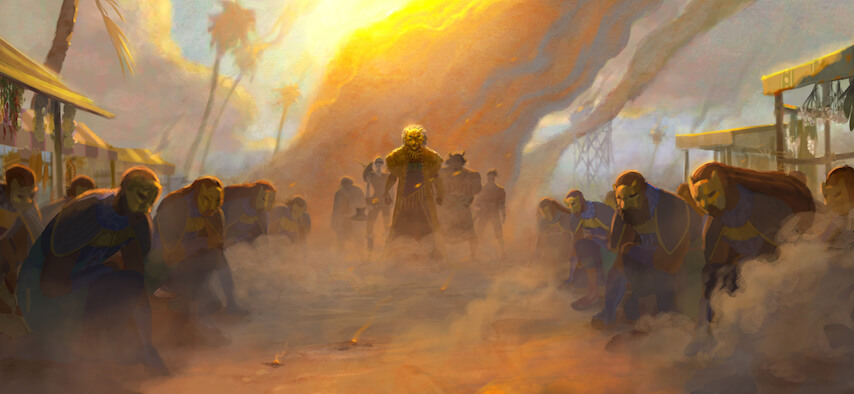
Eyes Of Wakanda (Image: Marvel)
Hints about Sam Wilson’s resurgent Captain America reforming the “real” Avengers is one thing. But the unexplained appearance in the mainstream Marvel universe (that’s 616 to the uninitiated) of universe 828’s sole superheroes implies that another promising wrinkle in the MCU formula is about to be ironed out. We don’t know why the Fantastic Four of First Steps is rocketing into “our” skies, but as much as 616 needs its own FF at this point, it’s understandable to have a twinge of disappointment at the prospect of First Steps’ parallel MCU being so quickly subsumed.
That aforementioned film took a bold, stylish (if not entirely thrilling) stride outside the established MCU, introducing Marvel’s first family in a kicky, ’60s-groovy, retrofuturistic New York where the Mad Men-look FF adventure in atomic age knitwear and employ nifty gadgetry more at home in the group’s origin era. But blasting that dimension-hopping super team right into the heart of the present-day MCU after a single outing makes it look an awful lot like Kevin Feige and co. have cold feet about maintaining a major franchise off of the expected path.
It’s perhaps presumptuous to wish that Marvel/Disney would extend a thousandth of the annual MCU outlay to creatives interested in pursuing marginally profitable projects like Eyes Of Wakanda as they do to the next world-conquering super-epic. And admittedly, some of the more audacious conceptual swings away from the median Marvel product have been met with divisive fan responses. (She-Hulk found toxic misogyny a much tougher villain than Titania.)
And yet Marvel fatigue isn’t just a cliché. The MCU simply wore people out in a blur of thunderous CGI explosions and one too many glowing otherworldly portal climaxes. Spectacle sapped of substance can only sustain its momentum so long before audiences grow numb and—more to Marvel’s concern—money falls off. Phase Six has more than enough big bang to lure the throngs back into the fold, what with two Avengers movies plus the creatively dubious return of Robert Downey Jr. as a different sort of iron man in Doctor Doom.
Eyes Of Wakanda didn’t break any streaming records. As much as it’d be refreshing to see action figures of series protagonists Noni and Memnon, it’s unlikely sales would recoup the cost of the plastic. But winning over jaded MCU fans with thoughtful, well-told, unexpected stories helmed by people with eyes more on the creative than the commercial (or the MCU grand plan) is an effort worth making for an entertainment empire saddled with the growing reputation of having more cash than ideas.
